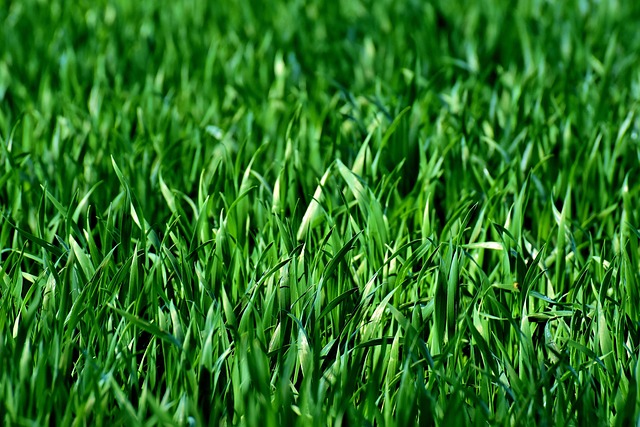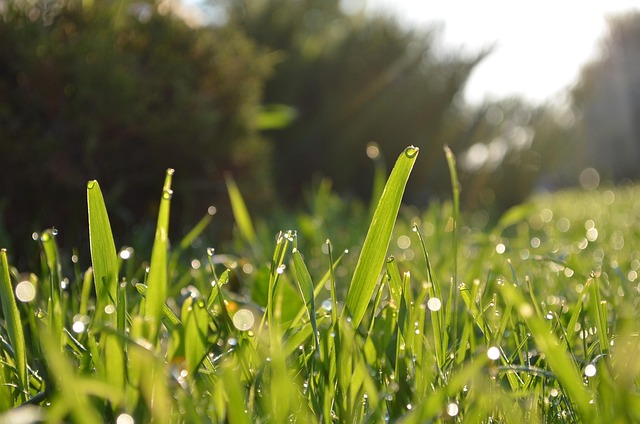Brown spots on lawns in Aurora primarily result from drought stress during summers and insufficient sunlight due to neighboring vegetation. Solutions include adjusting irrigation, using drip systems or soaker hoses, incorporating organic matter for better soil structure, aerating compacted areas, selecting drought-resistant grass varieties, regular aeration/topdressing, and enriching soil with organic matter to enhance water retention and turf health.
In the face of Aurora’s arid climate, maintaining a lush lawn can be challenging. Brown spots, often the first visual sign of drought stress, can cover your once-green oasis. This article guides you through understanding and addressing these common issues. We explore the root causes behind brown spots in Aurora’s unique environment and provide effective recovery strategies. Additionally, we offer long-term solutions to foster resilient lawns, ensuring they thrive during dry spells.
- Identifying Brown Spots: Common Causes in Aurora's Climate
- Drought-Stressed Lawn Recovery Strategies
- Long-Term Solutions for Resilient Lawns Amidst Dry Spells
Identifying Brown Spots: Common Causes in Aurora's Climate

Brown spots on your lawn can be a common sight, especially during drought periods in Aurora’s climate. Identifying these patches is crucial to understanding and addressing the underlying issues. The most frequent causes of brown spots are water stress and insufficient sunlight penetration due to neighboring vegetation or dense grass growth.
In the dry summers typical of Aurora, prolonged periods without adequate watering can lead to dehydration and subsequent browning of grass blades. Additionally, dense lawn areas can create a microclimate where moisture struggles to reach certain spots, exacerbating drought stress and causing brown patches.
Drought-Stressed Lawn Recovery Strategies

Lawn plants experiencing drought stress often manifest with noticeable signs, particularly the emergence of brown spots. Understanding the common causes behind this issue is pivotal to effective recovery strategies in Aurora’s challenging climate conditions. The primary culprits include insufficient water supply, extreme temperatures, and compacted soil hindering root growth.
To revive a drought-stressed lawn, several techniques can be employed. First, ensuring adequate water reaches the roots by adjusting irrigation schedules and utilizing drip systems or soaker hoses can help. Additionally, applying organic matter to the soil improves its structure and moisture retention capacity. Lastly, addressing any underlying compacted areas through aeration facilitates better root penetration, promoting overall lawn health and faster recovery from drought stress in Aurora’s gardens.
Long-Term Solutions for Resilient Lawns Amidst Dry Spells

To foster resilient lawns that can withstand prolonged dry spells, it’s crucial to address the common causes of brown spots, a telltale sign of drought stress often visible in Aurora’s landscape. One effective long-term solution is implementing efficient watering practices. This involves understanding your lawn’s water needs and utilizing smart watering technologies like drip irrigation or advanced sprinkler systems that minimize water waste. Regular deep watering sessions are more beneficial than frequent shallow ones, encouraging deeper root growth and overall turf health.
Additionally, choosing drought-resistant grass varieties specifically adapted to the local climate is a strategic move. These grasses possess natural tolerance to dry conditions, reducing the likelihood of brown spots and minimizing the need for excessive irrigation. Proper lawn maintenance, including regular aeration and topdressing, enhances soil structure, allowing for better water retention and nutrient exchange. This, in conjunction with organic matter enrichment, ensures your lawn remains robust during extended periods of drought.
In Aurora, understanding the common causes of brown spots on lawns, such as scorching sun exposure and lack of water, is key to implementing effective drought stress solutions. By employing strategies like proper watering techniques, fostering deep root growth, and selecting drought-resistant grass varieties, homeowners can achieve resilient lawns that thrive even during dry spells. These long-term solutions not only enhance lawn health but also contribute to a more sustainable landscape in the face of challenging weather conditions.
